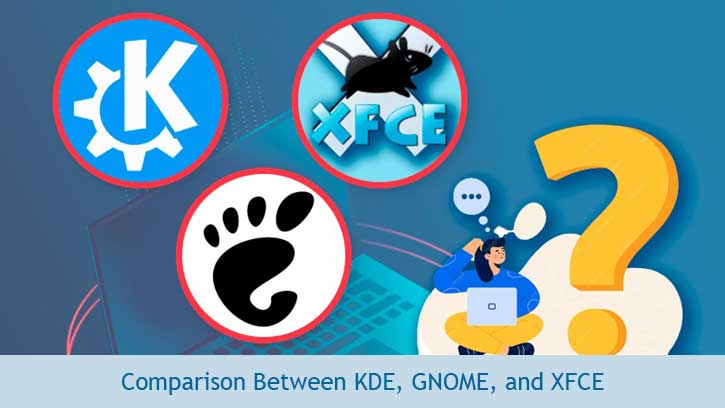When it comes to Linux desktop environments, the battle between KDE, GNOME, and XFCE is fierce. Each offers a distinctive set of features and aesthetics, making the decision a challenging one for users. In this detailed comparison, we’ll explore the strengths and weaknesses of KDE, GNOME, and XFCE, helping you navigate through the maze of choices for your Linux desktop.
Let’s delve into the world of desktop environments and understand where each stands in the KDE vs GNOME vs XFCE face-off.
ALSO READ: How to Install YouTube App (PWA) on Desktop PCs
Contents
KDE: Elegance and Customization
Unearth the elegance and unparalleled customization options that define KDE. From its visually stunning desktop effects to an extensive range of configurable settings, KDE is the go-to for users who value aesthetics and demand a personalized computing experience. Let’s dissect KDE’s features and understand where it outshines XFCE.
GNOME: Simplicity and Integration
Dive into the simplicity and seamless integration that GNOME brings to the Linux desktop. Explore the GNOME Shell, its intuitive design, and the commitment to providing a clutter-free interface. Discover how GNOME enhances productivity and integrates seamlessly with various applications, presenting a compelling alternative to XFCE.
XFCE: Lightweight and Efficient
Experience the lightweight and resource-efficient nature of XFCE. Tailored for users with a focus on system performance or those working with older hardware, XFCE offers a fast and responsive desktop environment. Delve into the simplicity of XFCE’s interface and explore how it competes with the feature-rich KDE.
Where They Clash: KDE vs GNOME vs XFCE
a. KDE vs XFCE: Balancing Act
Examine the scenarios where KDE’s power and XFCE’s lightweight efficiency compete. From resource-intensive tasks to system resource usage, understand the trade-offs and benefits of each desktop environment.
b. GNOME vs XFCE: Streamlining User Experience
Explore the battle between GNOME’s streamlined user experience and XFCE’s resource-conscious efficiency. For casual users and productivity enthusiasts, which desktop environment provides the optimal balance of simplicity and performance?
Users Take Center Stage: KDE vs GNOME vs XFCE for Different Needs
a. Developers and Power Users: KDE’s Versatility
Understand why developers and power users might lean towards KDE’s extensive customization and powerful features. From advanced configuration tools to multiple virtual desktops, KDE caters to those demanding a highly adaptable and feature-rich environment.
b. Casual Users and Productivity Enthusiasts: GNOME’s Simplicity
Discover why casual users and productivity enthusiasts may find GNOME’s simplicity and integration appealing. GNOME’s design philosophy focuses on providing an intuitive and distraction-free environment, making it a strong contender in the GNOME vs XFCE debate.
c. Resource-Conscious Users: XFCE’s Efficiency
Explore why resource-conscious users, especially those with older hardware, might opt for XFCE. XFCE’s efficiency ensures a snappy and responsive desktop without compromising essential features, making it a prime choice in the KDE vs XFCE showdown.
Your Decision Matters: KDE vs GNOME vs XFCE
Conclude your exploration by considering your individual needs, preferences, and the tasks you perform on your Linux desktop. To delve deeper into the specific features, nuances, and use cases, read our comprehensive guide for an in-depth analysis of KDE vs GNOME vs XFCE.
This thorough examination provides insights into the KDE vs GNOME vs XFCE debate, emphasizing their unique features and applications. For a detailed understanding and to make an informed decision based on your specific requirements, visit our detailed comparison guide. Each desktop environment is meticulously scrutinized to guide you toward the best choice for your Linux desktop experience. Go to the website of the Host-world provider and read more details.
More Resources:
- How to Disable Apps Installation on Windows 11
- How to Create Passkey For Your Google Account on Your Computer
- How to Increase Download Speed on Android, Windows, Mac and Linux
- How to Disable Old Search Queries Appears on Chrome New Tab Page on Android
- How to Edit Images in Microsoft Edge Browser – Supports JPEG, PNG, WebP, AVIF, etc.,

